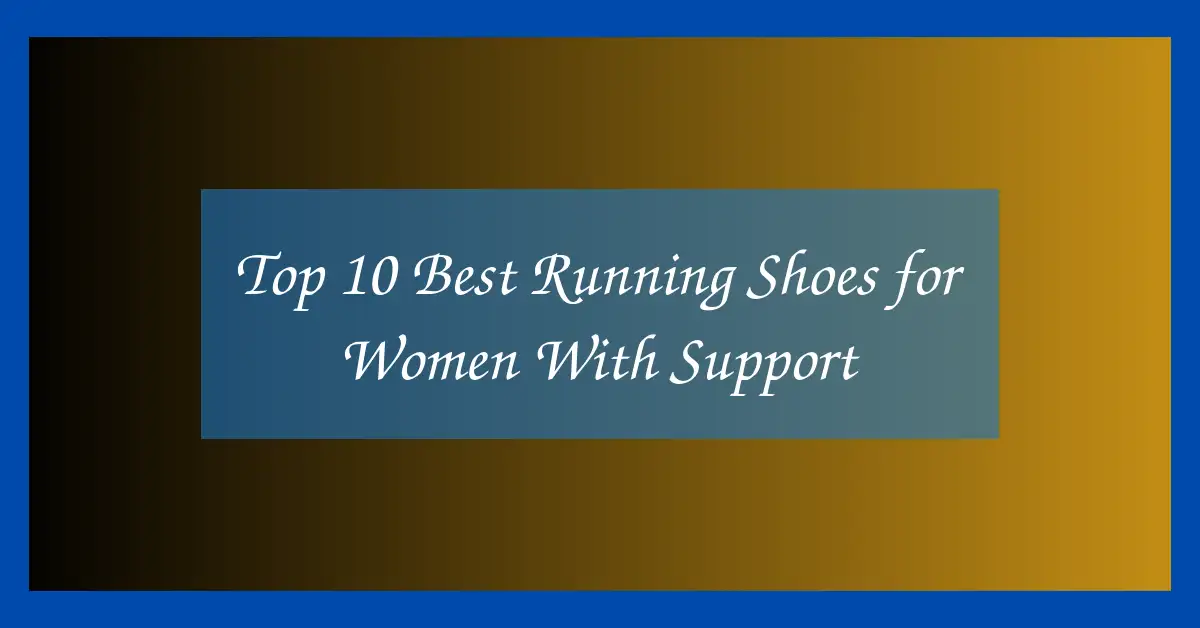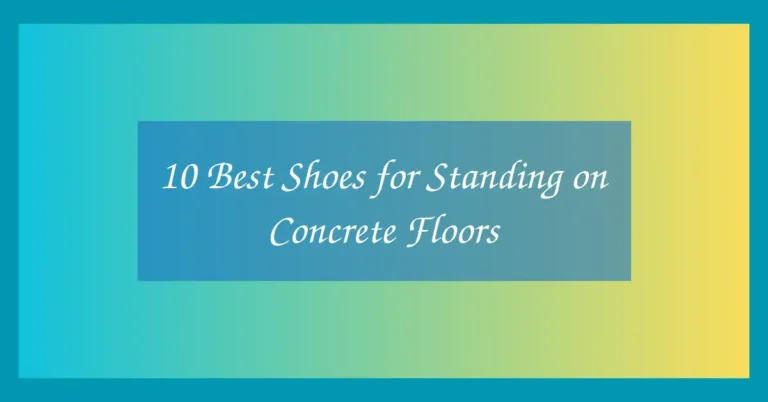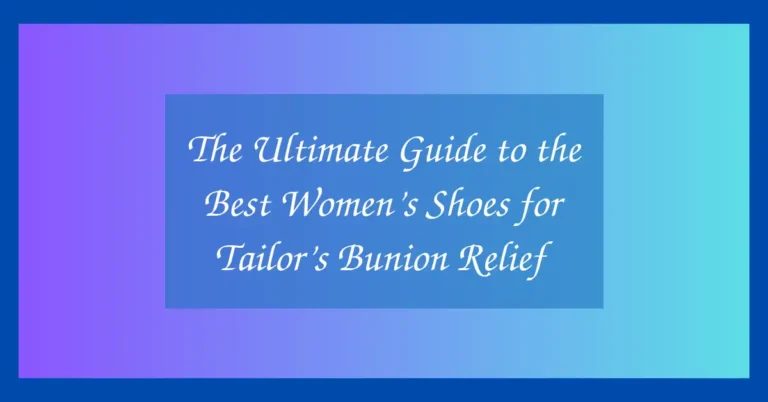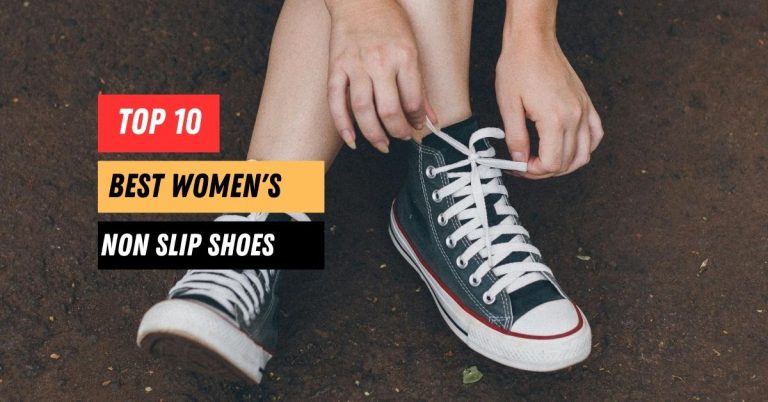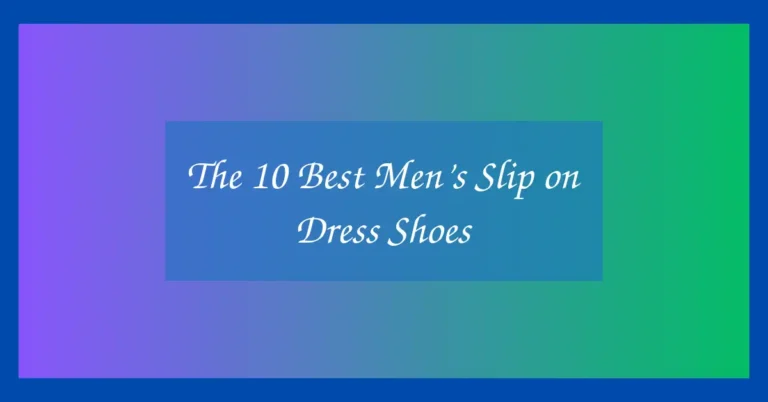Top 10 Best Running Shoes for Women With Support
Finding the best running shoes for women with support is crucial for anyone prioritizing comfort, stability, and injury prevention. Whether you’re a seasoned runner or just starting out, supportive shoes can help reduce fatigue and improve performance. In this guide, we explore top-rated models that balance cushioning, arch support, and breathable construction for women’s feet.
Supportive shoes aren’t just about comfort they’re a necessity for runners who experience overpronation, flat feet, or joint pain. We selected each pair based on performance, fit, stability, and materials, so you can confidently lace up and focus on your run.
Best Running Shoes for Women With Support
1. Brooks Adrenaline GTS 23
The Brooks Adrenaline GTS 23 continues to be a fan-favorite for women who need structured support without compromising flexibility. Its GuideRails® system ensures natural motion while preventing excess movement that could lead to knee pain.
The shoe’s DNA LOFT cushioning feels plush underfoot yet maintains responsiveness, making it suitable for both daily training and long runs. It absorbs impact efficiently without feeling too soft or slow.
The engineered mesh upper is airy and adaptive, hugging the foot while allowing it to breathe. It also holds its structure well over time, ensuring long-lasting support throughout the shoe’s life cycle.
This model works exceptionally well for women with mild to moderate overpronation who seek a reliable daily trainer with stability features built into a smooth ride.
Pros
- Reliable GuideRails support
- Balanced cushioning with responsiveness
- Durable mesh upper
Cons
- Not ideal for neutral runners
- Toe box may feel narrow to some
2. ASICS Gel-Kayano 30
Celebrating its 30th edition, the ASICS Gel-Kayano 30 is a hallmark of stability and comfort. It features the new 4D Guidance System™, which offers adaptive support that responds to your stride dynamically.
FF BLAST™ PLUS ECO cushioning makes this one of the softest Kayano versions ever. It provides a cloud-like experience without sacrificing the responsiveness needed for tempo runs or extended workouts.
Its rearfoot GEL® technology absorbs shock smoothly, while the midsole flares out to enhance ground contact, giving more support under unstable conditions or uneven terrain.
This shoe is perfect for long-distance runners or heavier women who need dependable, structured support with luxurious cushioning and smart energy return.
Pros
- Dynamic stability with 4D Guidance System
- Plush yet responsive FF Blast+ foam
- Excellent shock absorption with GEL®
Cons
- Heavier than minimalist models
- Premium build may not suit all budgets
3. HOKA Arahi 6
The HOKA Arahi 6 delivers a lightweight stability solution with a soft and supportive ride. Unlike traditional stability shoes, the Arahi uses HOKA’s J-Frame™ technology to guide the foot without stiff posting.
The balanced cushioning from the EVA midsole keeps every step smooth, whether you’re logging a quick 5K or prepping for a half marathon. It’s impressively light for a support shoe.
Breathable mesh uppers with anatomical support wings keep the foot locked in place. The overall design encourages a natural gait cycle while minimizing overpronation.
Women seeking a blend of soft landings and light motion correction will find this shoe a dependable, stylish option for daily running or long walks.
Pros
- J-Frame support with lightweight feel
- Soft EVA cushioning
- Secure and breathable upper
Cons
- May feel bulky to minimalist runners
- Limited responsiveness for fast paces
4. New Balance Fresh Foam X 860v13
The Fresh Foam X 860v13 from New Balance is engineered for stability and plush comfort. It features dual-density foam that controls overpronation while maintaining soft landings with every stride.
The medial post provides targeted support for flat-footed runners, while the structured heel counter enhances lockdown. The Fresh Foam midsole absorbs impact with a smooth roll-off for transitions.
The engineered mesh upper adapts well to varying foot shapes and promotes airflow. Reflective details are also included, making it a smart choice for early morning or night runs.
It’s an ideal pick for women who want firm arch support in a breathable daily trainer that works for recovery runs and everyday wear.
Pros
- Plush yet supportive dual-foam system
- Targeted arch and heel support
- Breathable mesh with reflective accents
Cons
- Can feel stiff at first wear
- Heavier than neutral shoes
5. Saucony Guide 16
The Saucony Guide 16 is a versatile stability shoe with a modern, comfortable feel. It uses PWRRUN cushioning that delivers a snappy yet stable ride suited for both daily training and tempo workouts.
The HOLLOW-TECH support frame replaces traditional posts with a lightweight and unobtrusive stability element. This lets the foot move naturally while still offering gentle guidance for overpronators.
Flex grooves in the outsole allow for smooth transitions, and the FORMFIT upper creates a secure and customized fit around the foot. The fit feels glove-like without restriction.
Women looking for a sleek, moderate-support running shoe that transitions well from treadmill to roads will appreciate what the Guide 16 offers in comfort and control.
Pros
- PWRRUN cushioning offers balance
- Modern stability via HOLLOW-TECH
- FORMFIT upper hugs the foot well
Cons
- Less cushion than some max-stack shoes
- Fit may feel snug for wide feet
6. Nike InfinityRN 4
The Nike InfinityRN 4 is designed with stability in mind for neutral to mildly overpronating runners. Featuring Nike’s ReactX foam, it offers exceptional energy return with reliable support throughout the gait cycle.
The Flyknit upper is breathable and snug, adapting to foot movements while keeping weight low. It also has improved padding around the collar and tongue for added comfort on long runs.
What makes this shoe stand out is its rocker geometry, which promotes a forward-rolling stride. It reduces pressure on the ankles and knees during the push-off phase.
It’s a great fit for women who want moderate support without sacrificing a lightweight feel, especially those logging medium to long weekly mileage.
Pros
- Responsive ReactX midsole
- Engineered Flyknit upper
- Rocker design for smooth transitions
Cons
- Not for extreme overpronators
- Less ground feel due to thick midsole
7. Altra Provision 7
Altra’s Provision 7 stands apart with its zero-drop platform and foot-shaped toe box. It offers natural support with Altra’s GuideRail™ technology that activates only when needed, allowing for a more organic stride.
It’s ideal for runners who want stability without a traditional arch post. The EGO™ midsole provides a moderate cushion, delivering softness without excessive bounce.
The roomy toe box enhances toe splay and balance, which can benefit those prone to bunions or discomfort in tight shoes. The upper is flexible yet supportive around the midfoot.
This is best for women who favor a minimalist-inspired shoe with structured guidance that doesn’t feel forced or rigid.
Pros
- Zero-drop with natural ride
- Roomy foot-shaped toe box
- GuideRail only activates when needed
Cons
- Zero-drop can be an adjustment
- Less plush than max-cushion models
8. On Cloudflyer 4
The On Cloudflyer 4 offers a luxurious and supportive experience for runners who crave cloud-like softness with inherent structure. It features Helion™ superfoam paired with large CloudTec® pods that compress and rebound efficiently.
The wider base and molded heel counter stabilize every step, while the Speedboard™ plate encourages forward propulsion. It’s both a stable and energetic ride.
Breathability is enhanced through the engineered mesh upper, and the shoe wraps comfortably around the foot without feeling tight or loose. The reflective details are a bonus for low-light running.
Ideal for women looking for stability plus a premium aesthetic and ride quality across long training runs or urban routes.
Pros
- Helion™ foam with CloudTec® for plush landings
- Wide platform and heel support
- Energy-returning Speedboard™
Cons
- Premium design may feel bulky
- Speedboard may feel stiff to some
9. Mizuno Wave Inspire 19
The Wave Inspire 19 is one of Mizuno’s most stable running shoes, integrating its Wave Plate for structured yet flexible support. It provides shock absorption without overly soft foam, helping runners feel grounded.
Mizuno ENERZY foam in the midsole offers responsiveness and durability, especially effective during tempo runs or extended workouts. It’s a balanced midsole neither too firm nor too plush.
The upper features air mesh with reinforced overlays for breathability and lockdown. The heel collar is comfortably padded without causing slippage.
Women who need solid arch support and midfoot stability, especially for overpronation, will benefit from this durable, high-mileage option.
Pros
- Stable Wave Plate design
- Durable and responsive ENERZY foam
- Secure fit with good heel support
Cons
- Heavier than some rivals
- Break-in period may be required
10. Adidas Solarcontrol
Designed for long-distance stability, the Adidas Solarcontrol blends Control Platform support with Energyrods that guide the foot smoothly through each stride. It stabilizes motion without feeling too stiff or heavy.
The full-length BOOST™ midsole gives soft cushioning with solid energy return. It helps absorb impact while propelling runners forward efficiently over long hauls.
Primegreen materials in the upper support eco-conscious consumers, while the shoe itself fits snugly with a structured heel and wide base for extra control.
This shoe is ideal for women seeking a secure ride with long-run comfort, especially if they want eco-friendly features built into a performance shoe.
Pros
- Energyrods provide smooth transitions
- BOOST™ midsole absorbs and rebounds well
- Eco-friendly Primegreen upper
Cons
- Upper can feel tight for wide feet
- Outsole traction average on wet roads
| Product Name | Support Technology | Cushioning Type | Weight (Approx) | Best For |
|---|---|---|---|---|
| Brooks Adrenaline GTS 23 | GuideRails® System | DNA LOFT | 9.1 oz | Knee & motion control |
| ASICS Gel-Kayano 30 | 4D Guidance System™ | FF Blast+ & GEL® | 9.2 oz | Long-distance stability |
| HOKA Arahi 6 | J-Frame™ | EVA Foam | 8.5 oz | Daily training comfort |
| New Balance 860v13 | Dual Density Post | Fresh Foam X | 9.4 oz | Flat feet & arch support |
| Saucony Guide 16 | HOLLOW-TECH | PWRRUN | 8.8 oz | Moderate stability |
| Nike InfinityRN 4 | ReactX Platform | ReactX Foam | 9.0 oz | High-mileage comfort |
| Altra Provision 7 | GuideRail™ | Altra EGO™ | 8.3 oz | Natural stability |
| On Cloudflyer 4 | Wide Base + Speedboard™ | Helion™ & CloudTec® | 9.5 oz | Lux stability for roads |
| Mizuno Wave Inspire 19 | Wave Plate | ENERZY Foam | 9.6 oz | Firm control & shock absorption |
| Adidas Solarcontrol | Energyrods + Control Platform | BOOST™ Foam | 10.0 oz | Eco + long-run support |
Best Running Shoes for Women With Support Buying Guide
Understand Your Support Needs
Before choosing a running shoe, determine whether you have neutral, overpronating, or underpronating feet. Supportive shoes are ideal for overpronators who need help stabilizing their stride and preventing inward rolling. Foot shape, past injuries, and joint sensitivity also factor into your support requirements.
Cushioning and Responsiveness
Support shoes come in varying levels of cushioning. Some, like the ASICS Kayano, offer plush, shock-absorbing foam ideal for long runs, while others, like the Saucony Guide, offer firmer, more responsive rides. Choose cushioning based on your mileage, speed, and terrain preferences.
Weight vs Stability Balance
Heavier shoes often offer more built-in structure, but modern models balance weight and stability smartly. Lightweight stability shoes like HOKA Arahi 6 or Altra Provision 7 provide effective motion control without bulk. Runners focused on pace or racing may benefit from lighter designs.
Fit and Toe Box Design
Support shoes should feel secure around the midfoot and heel without causing discomfort or rubbing. Look for models with anatomical toe boxes if you need more room for toe splay. Women with bunions or wide feet may benefit from wider sizes or brands like Altra.
Durability and Daily Mileage
Runners logging 20+ miles weekly need durable midsoles and outsoles that hold up over time. Brands like Brooks and Mizuno excel in durability for high-mileage use. Check wear patterns on past shoes to gauge how quickly you burn through tread or midsole compression.
Additional Features to Consider
Reflective elements, eco-friendly uppers, breathable mesh, and gusseted tongues can elevate your running experience. If you train at night or in low light, visibility features are essential. If you’re sustainability-conscious, models like Adidas Solarcontrol made with Primegreen are a smart choice.
FAQ
What type of foot needs a supportive running shoe?
Supportive shoes are typically recommended for runners who overpronate meaning their feet roll inward excessively during the gait cycle. These shoes help realign foot movement and protect knees, hips, and ankles from misalignment and potential injury.
Can neutral runners wear supportive running shoes?
While it’s not harmful, neutral runners usually don’t need the added structure of support shoes. Wearing unnecessary support might feel stiff or restrictive. However, those recovering from injuries or seeking added stability may benefit short-term from moderate-support models.
Are stability and motion control shoes the same?
They serve similar purposes but differ in intensity. Stability shoes offer gentle guidance and correction, whereas motion control shoes provide more rigid support for severe overpronation or flat feet. Motion control options are less common and typically heavier.
What’s the best support shoe for long-distance running?
For long distances, look for shoes with plush cushioning and reliable structure. ASICS Kayano 30, Brooks Adrenaline GTS 23, and Adidas Solarcontrol all perform well on extended runs due to their consistent support and comfort-focused midsoles.
How often should I replace my supportive running shoes?
Most running shoes last between 300–500 miles. Supportive shoes may wear faster if used heavily for stability correction. Signs of replacement include loss of cushioning, uneven outsole wear, and increased joint discomfort during or after runs.
Can I use support running shoes for walking or gym workouts?
Yes, many supportive running shoes work well for walking and light gym workouts. Their structure helps prevent fatigue and misalignment during extended standing or movement. However, for heavy lifting, flatter shoes or trainers may be better suited.
Verdict
Choosing the best running shoes for women with support means understanding your gait, mileage, and comfort needs. Whether you prioritize soft cushioning, lightweight design, or structured correction, the ten options above offer a strong starting point. With the right pair, you’ll run smoother, longer, and with fewer injuries holding you back.

